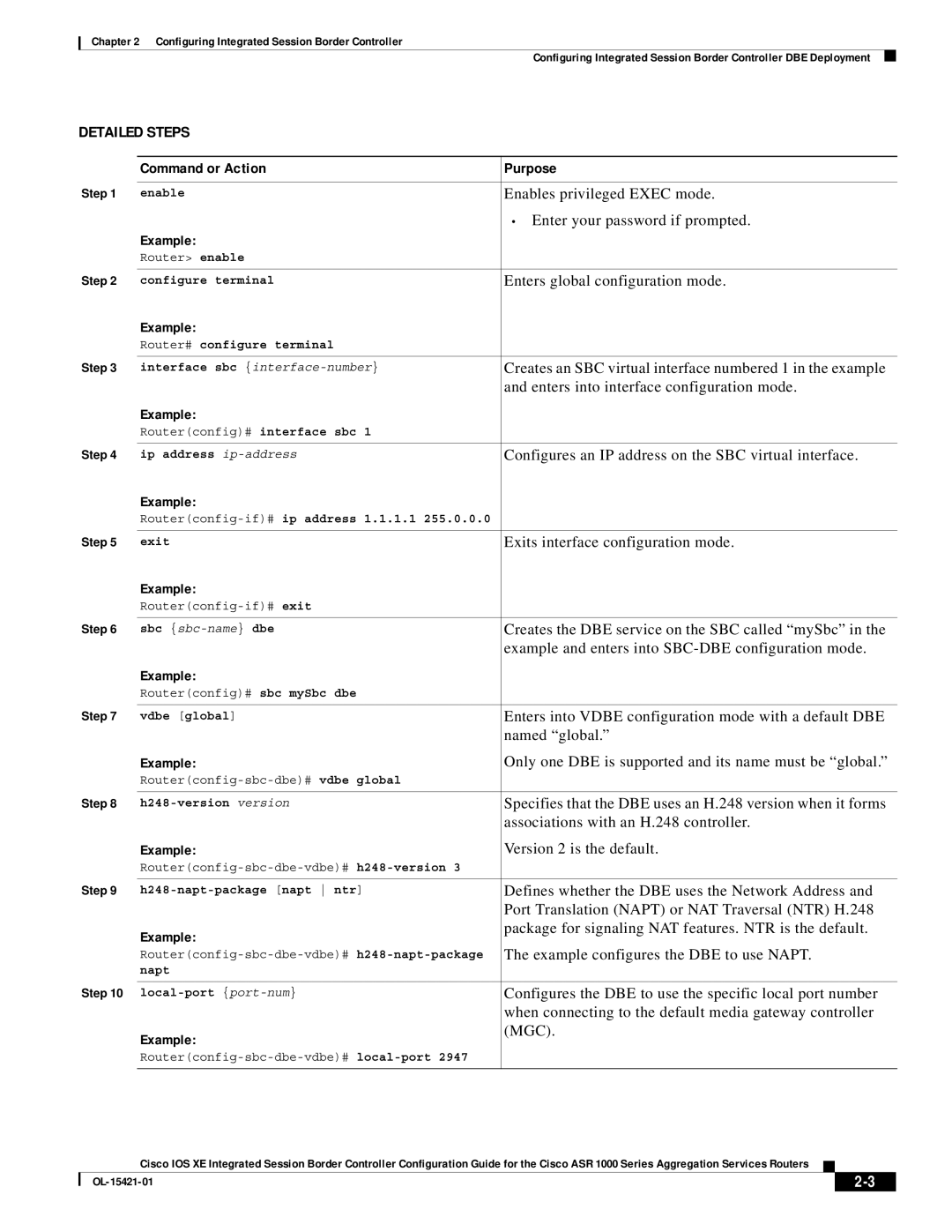
Chapter 2 Configuring Integrated Session Border Controller
Configuring Integrated Session Border Controller DBE Deployment
DETAILED STEPS
| Command or Action | Purpose |
Step 1 |
|
|
enable | Enables privileged EXEC mode. | |
|
| • Enter your password if prompted. |
| Example: |
|
| Router> enable |
|
Step 2 |
|
|
configure terminal | Enters global configuration mode. | |
| Example: |
|
| Router# configure terminal |
|
Step 3 |
|
|
interface sbc | Creates an SBC virtual interface numbered 1 in the example | |
|
| and enters into interface configuration mode. |
| Example: |
|
| Router(config)# interface sbc 1 |
|
Step 4 |
|
|
ip address | Configures an IP address on the SBC virtual interface. | |
| Example: |
|
|
| |
Step 5 |
|
|
exit | Exits interface configuration mode. | |
| Example: |
|
|
| |
Step 6 |
|
|
sbc | Creates the DBE service on the SBC called “mySbc” in the | |
|
| example and enters into |
| Example: |
|
| Router(config)# sbc mySbc dbe |
|
Step 7 |
|
|
vdbe [global] | Enters into VDBE configuration mode with a default DBE | |
|
| named “global.” |
| Example: | Only one DBE is supported and its name must be “global.” |
|
| |
Step 8 |
|
|
Specifies that the DBE uses an H.248 version when it forms | ||
|
| associations with an H.248 controller. |
| Example: | Version 2 is the default. |
|
| |
Step 9 |
|
|
Defines whether the DBE uses the Network Address and | ||
|
| Port Translation (NAPT) or NAT Traversal (NTR) H.248 |
| Example: | package for signaling NAT features. NTR is the default. |
|
| |
| The example configures the DBE to use NAPT. | |
| napt |
|
Step 10 |
|
|
Configures the DBE to use the specific local port number | ||
|
| when connecting to the default media gateway controller |
| Example: | (MGC). |
|
| |
|
|
|
|
|
|
Cisco IOS XE Integrated Session Border Controller Configuration Guide for the Cisco ASR 1000 Series Aggregation Services Routers
|
| ||
|
|
